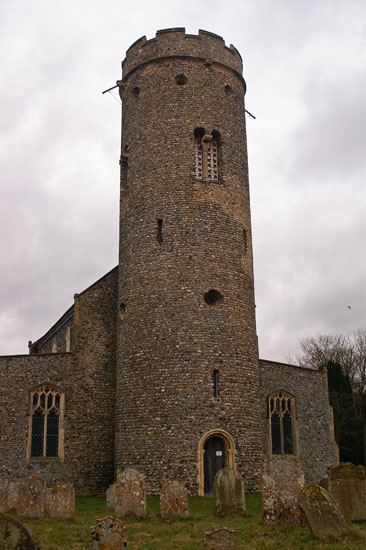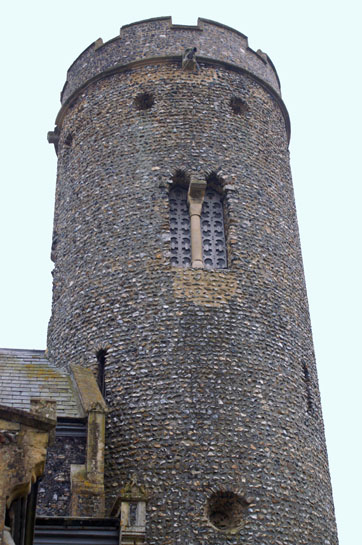|
|
||||||||||||||||||||||||||||||||||||||||||||||||||||||||||
|
Please sign my Guestbook and leave feedback |
||||||||||||||||||||||||||||||||||||||||||||||||||||||||||
|
Recent Additions |
||||||||||||||||||||||||||||||||||||||||||||||||||||||||||
|
Diana and I spent a few cold days in March 2010 wandering around the Norfolk and Suffolk borders paying short visits to round towered churches. And to think we had meant to be in balmy Madeira but had been stymied by the island’s destructive floods that Spring! This page shows just a very small percentage of Norfolk’s round towered churches. There is a wealth of literature available that covers them all because this is a subset of churches that has attracted its own set of enthusiasts who even have their own journal. So I’m scratching the surface here. Finding these churches reminds you that away from Norwich, the Broadlands and the very fashionable North West coast, Norfolk is a deeply rural county. These churches were by definition founded in the Anglo-Saxon and Norman periods and many of them are still modest and still serve tiny and cash-strapprf communities. We did no prior research into whether doors would be open to us and we did find that a substantial proportion were indeed locked. Where there are no interior pictures shown you can safely assume that the church does not have an open door policy. Conversely, however, you cannot assume that there was no keyholder available because we did not always go to the trouble of obtaining one when keyholders could be some way away and with less than comprehensive directions displayed! Do your homework before conducting a tour. Apart from the round towers, you will find that these churches have a decent percentage of surviving pre-Reformation chancel screens. Fonts too are frequently Norman, albeit of simple design, and others are octagonal with interesting decoration. Some thatched roofs also survive. You might find that a church will have connections to Second World War RAF and USAF bases, because this was “bomber country”. All in all, there are plenty of little gems to uncover. |
|
|
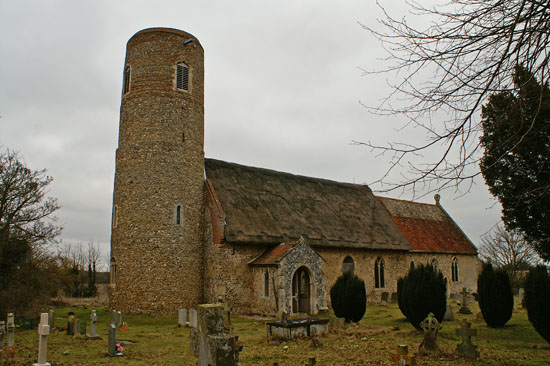 |
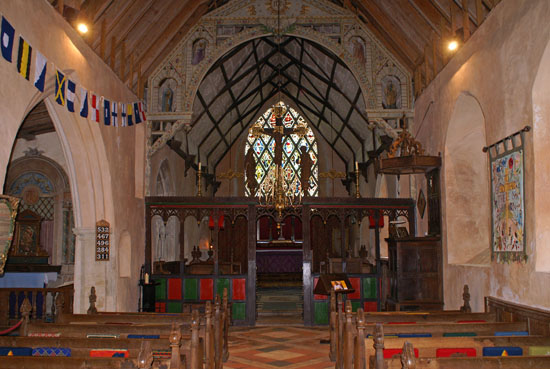 |
||||
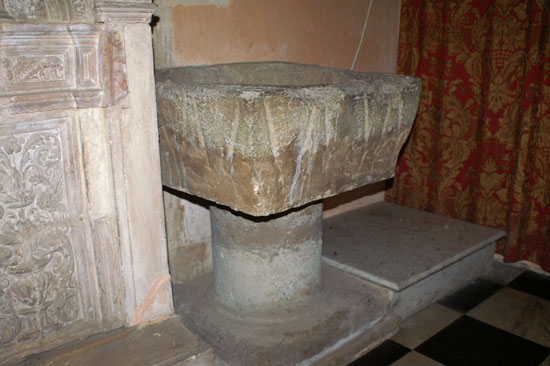 |
 |
||||
|
The age of Barsham’s tower is unknown - not a good start for this page! The lower two of the three stages are either Saxon or Norman and the top stage much later. The west and south walls are believed to be even older than the tower. The nave is thatched. The church within is very pretty and dominated by the painted rood screen and wooden chancel arch which are modern. The most outstanding feature, though, is the stone lattice design over the whole of the east end which is continued even across the east window. This dates from mid c16 although its stonework had to be replaced after sustaining lightning damage in 1906. There is a c15 font which stands upon the base of the original Norman one, the bowl of which, however, is preserved near the altar. |
|
Bedingham, St Andrew |
|||||||||||||
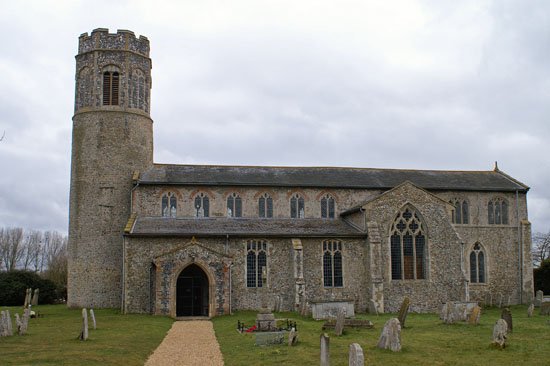 |
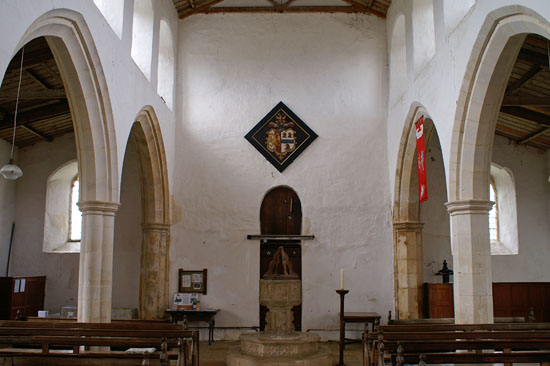 |
||||||||||||
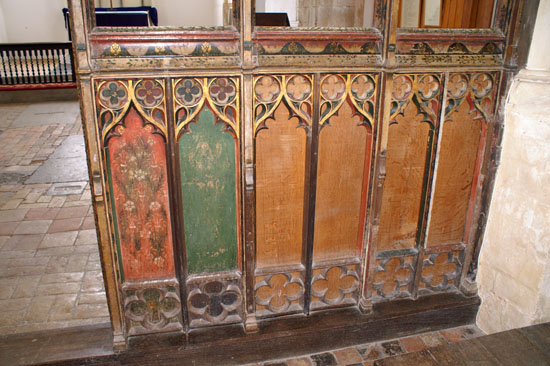 |
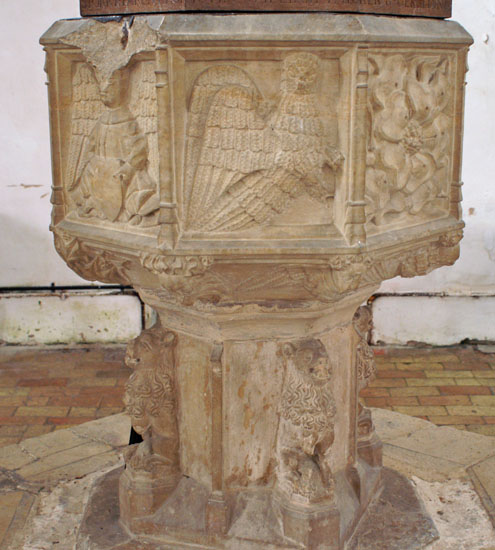 |
||||||||||||
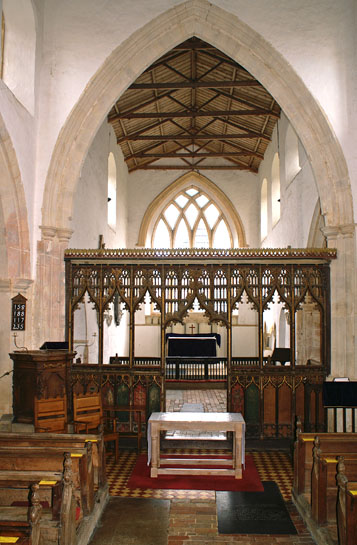 |
|||||||||||||
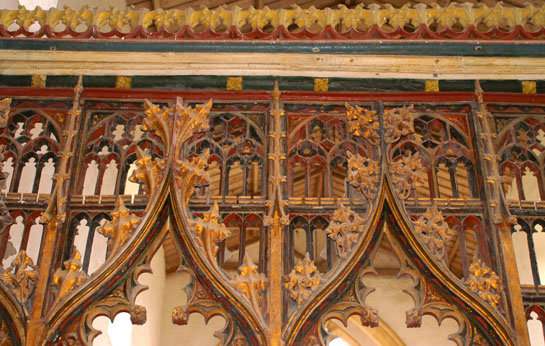 |
|||||||||||||
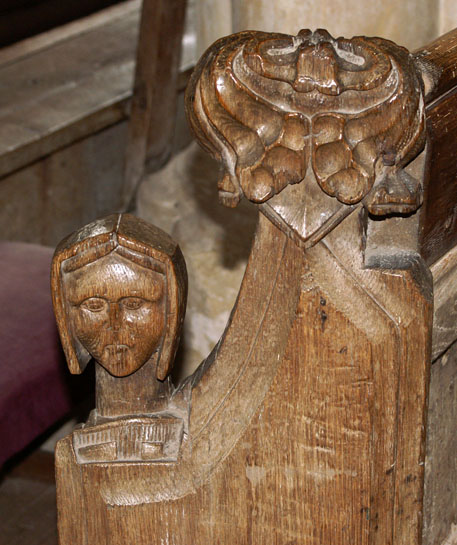 |
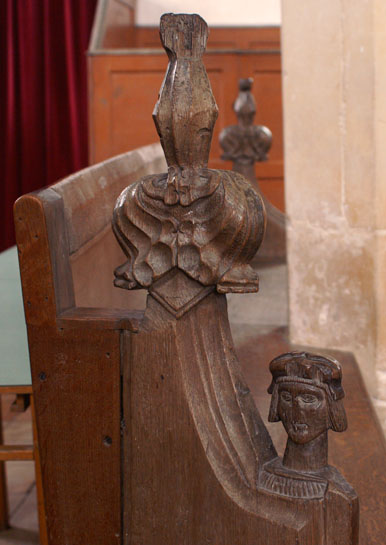 |
||||||||||||
|
Bedingham was one of those parishes that managed to have two churches on the same site! See Swaffham Prior in Cambridgeshire for a village that still has this odd arrangement. The explanation at Bedingham is the same: two manors within the same village. St Mary’s was abandoned during the Reformation. Bedingham is one of the grander round tower churches. This was probably due to St Andrews’s connection with Walsingham Priory Manor, itself owned by Walsingham Priory which was until the Reformation one of the biggest pilgrimage sites in Europe, never mind in England. The round tower is Saxo-Norman surmounted by an octagonal top that was probably added in c15. The painted rood screen dates from the same period.m The octagonal font has the symbols of the four evangelists, some other angel motifs and two Tudor roses. It too is c15, the heyday for this church, its association with Walsingham being augmented by the wealth of the wool trade in this part of Norfolk. In the picture top right you can see the tall Anglo-Saxon tower arch which is the main evidence of the antiquity of this tower. There is a couple of delightful bench ends showing a man and perhaps his wife. |
|
Brooke, St Peter |
||||||||||
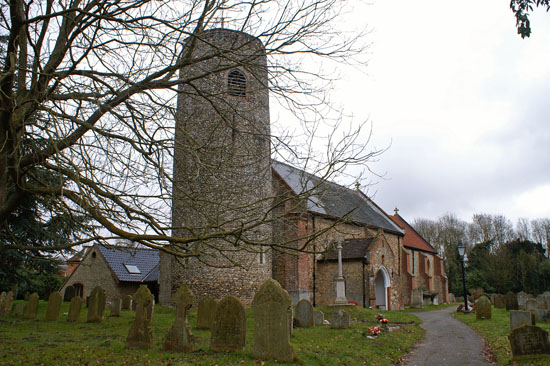 |
||||||||||
 |
||||||||||
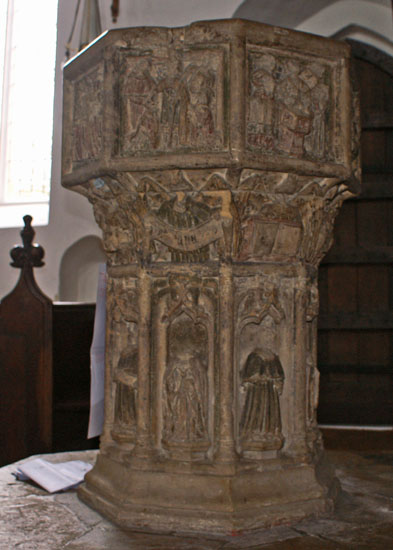 |
||||||||||
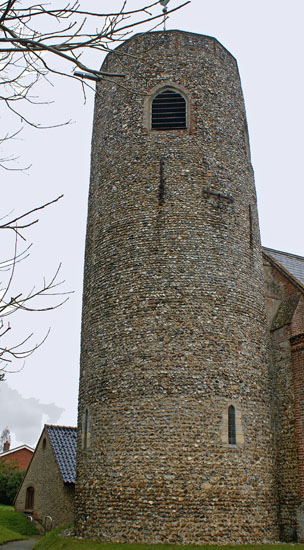 |
||||||||||
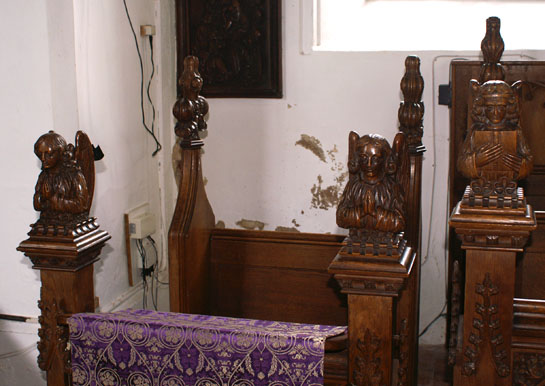 |
||||||||||
|
The oldest part of Brooke’s tower is the base which is c12 Norman. The second stage is Early English and the top stage is c15. The most interesting thing here is the “Seven Sacraments” font. There are 37 of these in England, almost all of then in Norfolk and Suffolk. Like so many of these fonts, the Reformation iconoclasts have disfigured the font by hacking out the faces of the saints. The poppy heads (lower right) are quite fetching but look quite modern. |
|
Forncett St Peter |
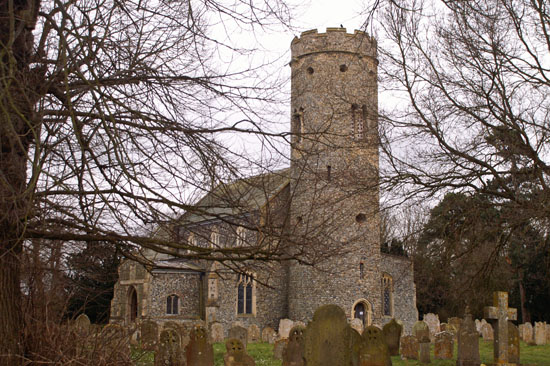 |
|||
 |
|||
|
|
|||||||||||||||||||||||||||||||
 |
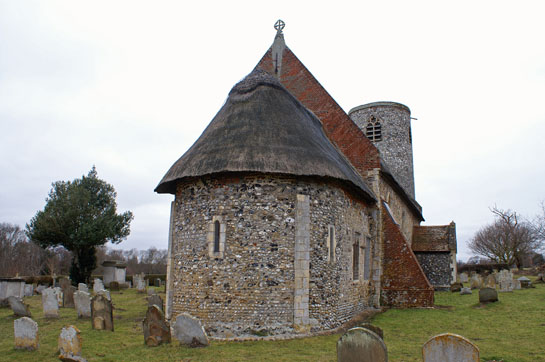 |
||
 |
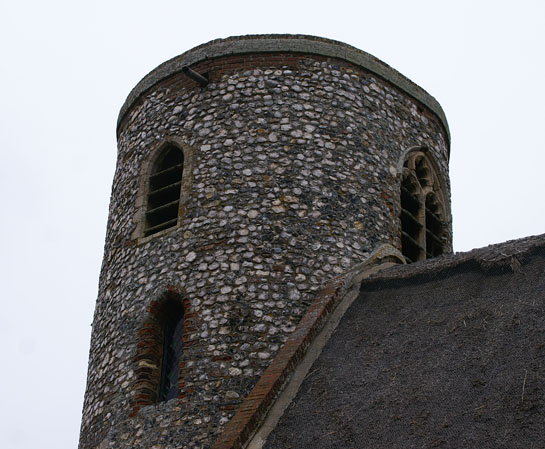 |
||
|
There are two Frittons in Norfolk. The other is St Catherine which also has a round tower. St Edmunds was in fact within Suffolk until boundary changes a while back. Fritton St Edmund is one of those few churches that have a thatched roof and it covers both nave and chancel. The church was locked and this was one that we have regrets about because it is interest far beyond its round tower. It has a thatched Norman apsidal chancel comparable with that at Hales and the chancel itself is tunnel-vaulted, a great rarity. The apse retains its orginal Norman windows at its east end. The tower too is Norman.. |
|
Haddiscoe, St Mary |
|||||||||||||||||||||
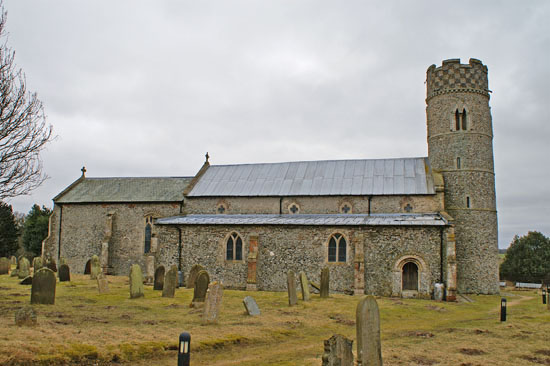 |
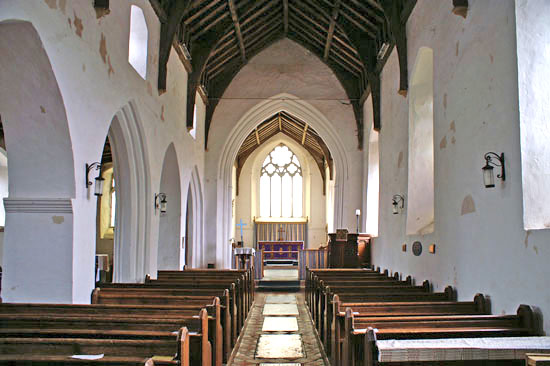 |
||||||||||||||||||||
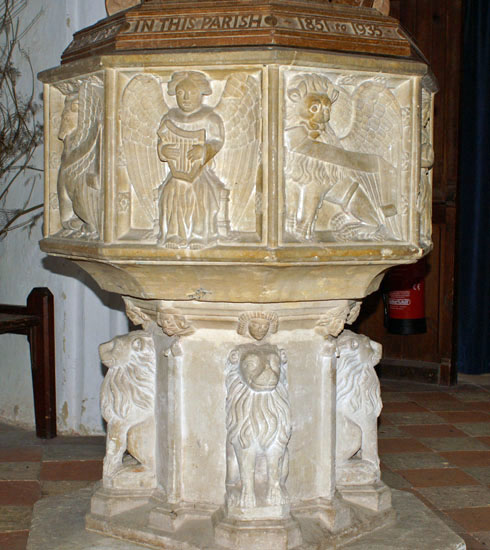 |
|||||||||||||||||||||
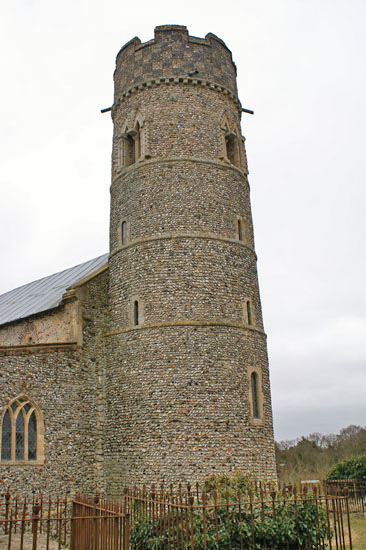 |
|||||||||||||||||||||
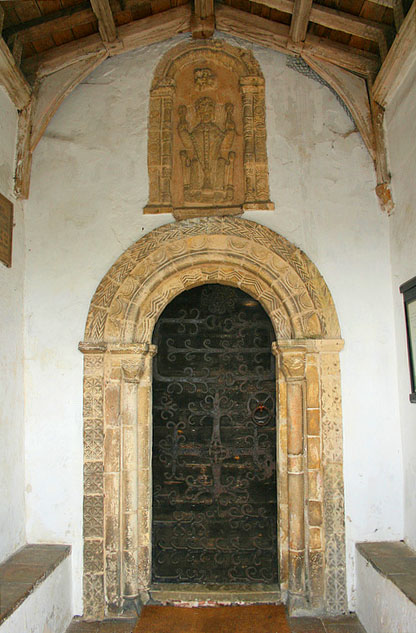 |
|||||||||||||||||||||
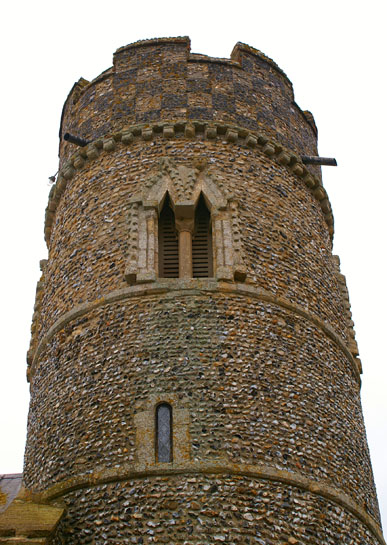 |
|||||||||||||||||||||
 |
|||||||||||||||||||||
 |
|||||||||||||||||||||
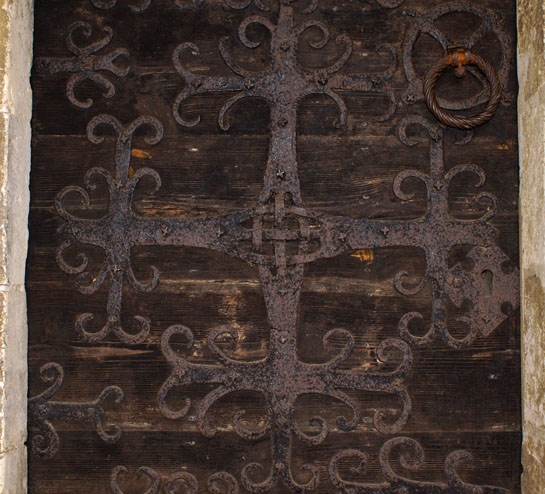 |
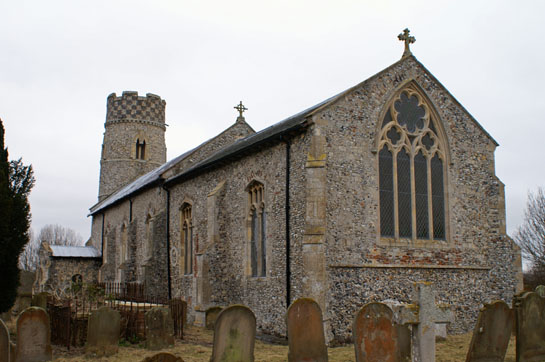 |
||||||||||||||||||||
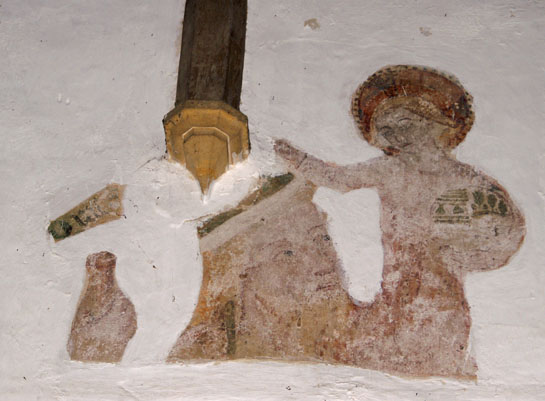 |
|||||||||||||||||||||
|
Haddiscoe Church has its origins back to the Anglo-Saxon period. The tall tower with its lovely pointed bifora and the lofty nave are very typical of this time. Note (middle, row centre) the height of the western arch and the typical high doorway above it that probably gave out into a wooden gallery. The Normans made changes and there were other alterations throughout c13, c14 and c15. The original entrance to the tower is 16ft above the ground, giving credence to those that maintain that the round towers were designed for defence against the Vikings. I think, nevertheless, that we can assume that post-Conquest towers at least were unlikely to have been preoccupied with defence. You didn’t mess with the Normans and, in any event, England was ruled by Scandinavian kings for most of the eleventh century up until that point. Other commentators have pointed out that the adoption of Christianity by most Vikings eliminated the concept that death with a sword in one’s hand was a sure route to the Halls of Valhalla and eternal drinking and whoring! Haddiscoe, however, is close to the coast and raiders could easily navigate to it via the River Waveney so there must have been bitter memories and dread here for many decades. Only the chequer-boarded top section of the tower is not late Anglo-Saxon. There are fragments of wall paintings here and a couple of Norman doorways, one with superb mediaeval ironwork, and there is a splendid carving of supposedly of St Peter above the south door so this is a church well worth visiting. |
|
Heckingham, St Gregory |
|||||||||||||||||||||||||||||
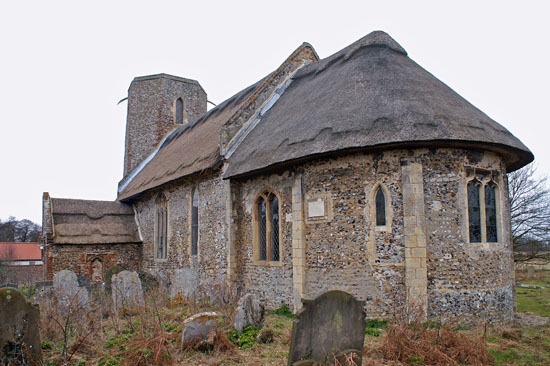 |
|||||||||||||||||||||||||||||
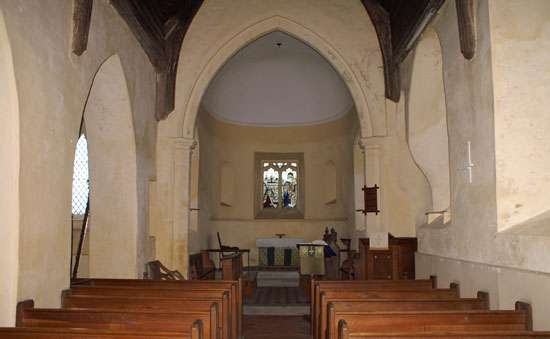 |
|||||||||||||||||||||||||||||
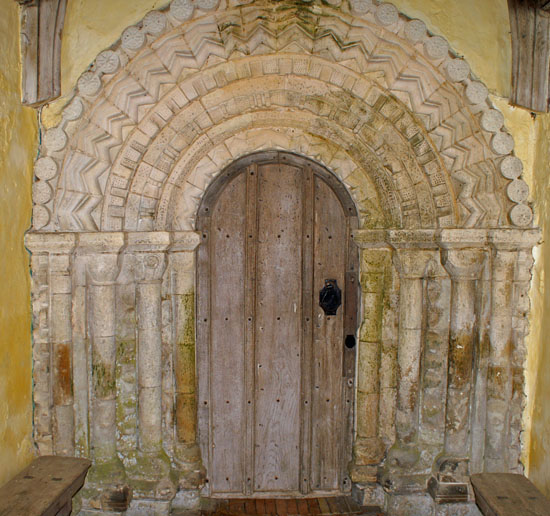 |
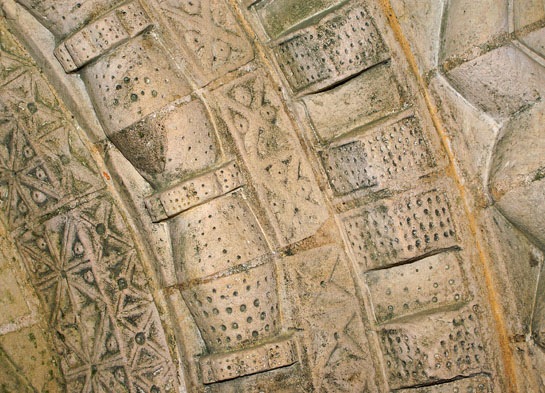 |
||||||||||||||||||||||||||||
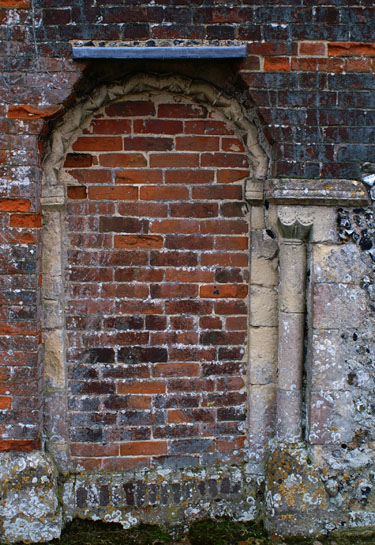 |
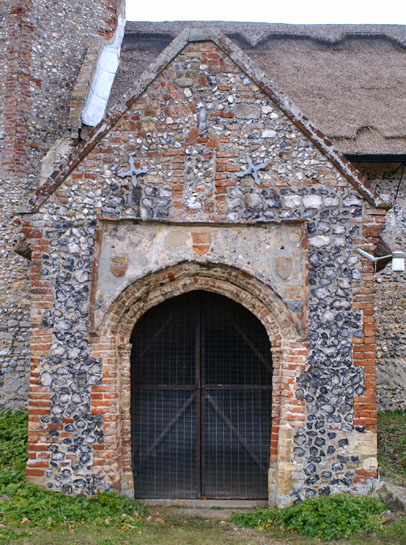 |
||||||||||||||||||||||||||||
 |
|||||||||||||||||||||||||||||
|
Heckingham is another church that has Norman features other than its tower. Indeed, only the base of this tower is Norman and the rest is octagonal and of indeterminate age. Its south door is a delightful example with no less than seven courses of decoration, some very unusual. As at Hales and Fritton (above) its apse survives. Apses are very rare in England simply because their shape was impractical and hard to maintain and, as I am fond of pointing out, the geometry of a an apse limits its size. Literally hundreds of apses were demolished and covered over by larger rectangular chancels. Its a big loss, but Norfolk has more than its fair share of survivors which tells you much about how deeply rural many of these churches are. Like the others it is also thatched and so is Barsham (above). This too owes something to the deeply rural environment but it is also in no small measure due to the ready availability of thatch in this area compared with other materials. |
|||||||||||||||||||||||||||||
|
Kirby Cane, All Saints |
|||||||||||||||||||||||||||||
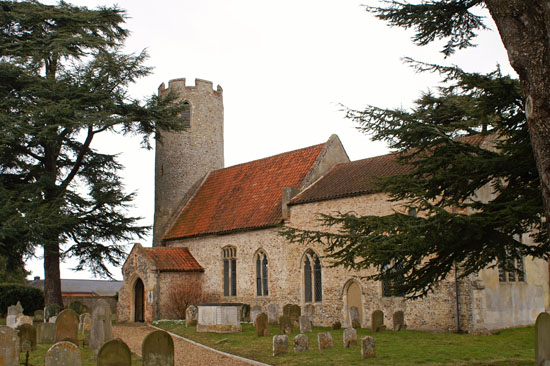 |
 |
||||||||||||||||||||||||||||
 |
|||||||||||||||||||||||||||||
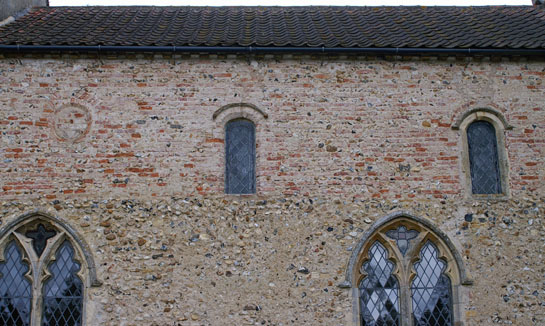 |
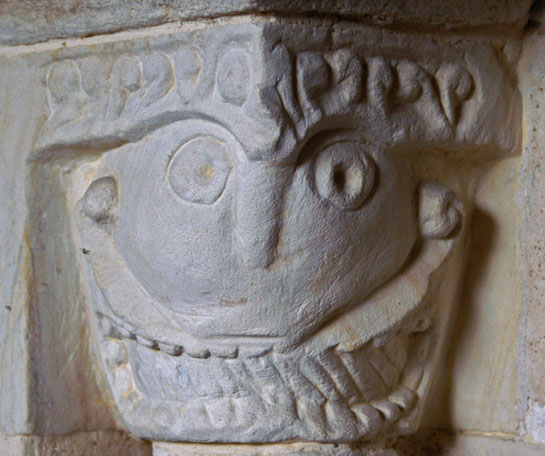 |
||||||||||||||||||||||||||||
 |
|||||||||||||||||||||||||||||
|
The tower at Kirby Cane is probably pre-Conquest but nobody can be sure. Certainly the church is no later than c11. It is, however, much changed, Apart from its tower the main point of interest here is the Norman south door but it cannot stand comparison with Haddiscoe or Heckingham. There are some remarkably crude carvings on this church - see the door capital (middle right) and the one above the doorway itself (above). |
|||||||||||||||||||||||||||||
|
The following Norfolk Round Tower Churches have their own pages. Click on their names to visit them: |
|||||||||||||||||||||||||||||
|
|
|||||||||||||||||||||||||||||
